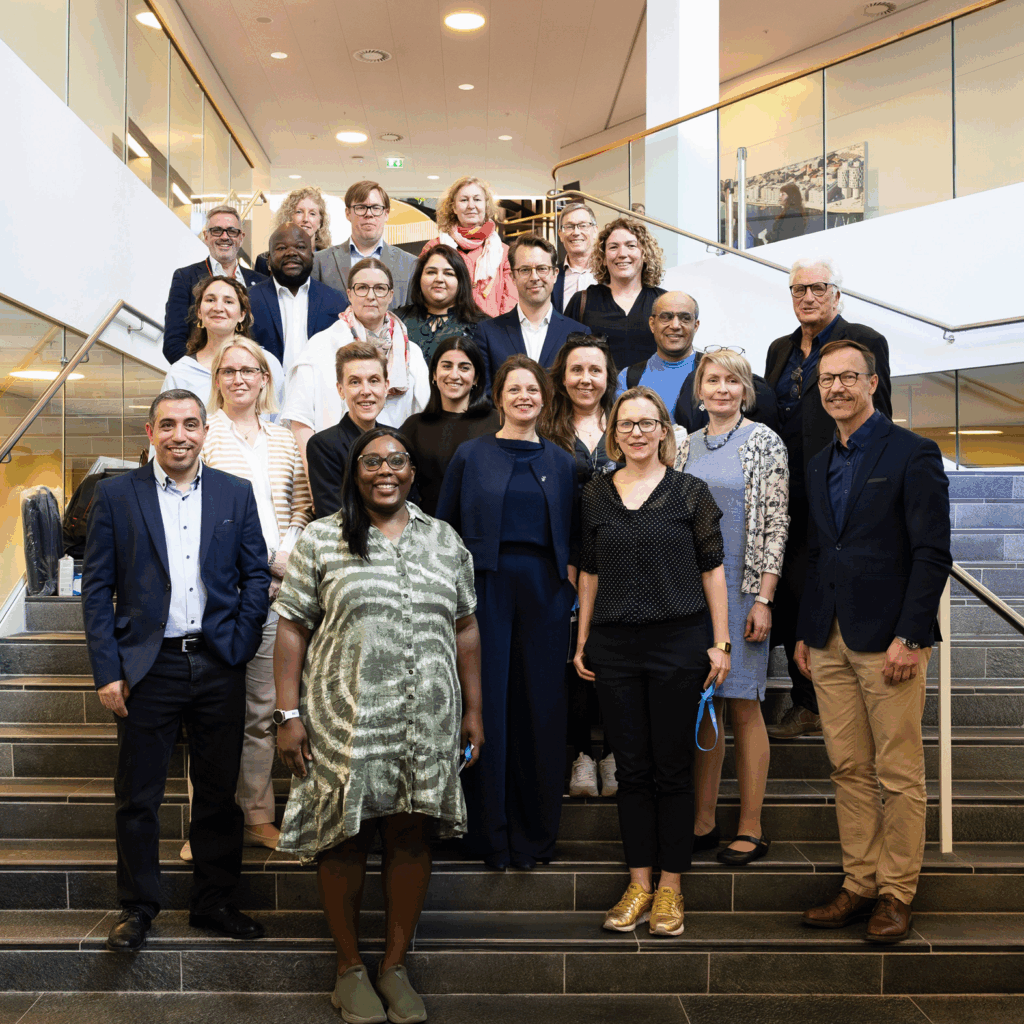
On the final day of the World Health Organization (WHO) conference, a “Sandpit” workshop brought together global leaders to explore how digital health and artificial intelligence (AI) can help solve one of the most pressing challenges of our time: health workforce shortages. Featuring insights from Scotland and Sweden, the session offered a glimpse into what’s possible when digital innovation meets system-level strategy.
🧭 Scotland’s Digital Shift
Janette Hughs, Director of Planning and Performance at Scotland’s Digital Health & Care Innovation Centre, opened with a compelling statement:
“We have workforce shortages today, and we’ll have workforce shortages tomorrow. We can’t just throw more people at this problem. We need to use digital solutions too.”
Her message was clear—digital transformation is no longer optional. It’s already happening. By 2030, the digital health industry is projected to grow by $700 billion. By 2035, over 60% of today’s primary school children will enter jobs that don’t yet exist. Whether we’re ready or not, digital health and AI are reshaping the landscape—and we must recognize them as essential components of the health workforce solution.
Workshop participants at the WHO conference explored the growing digital skills gap in the health workforce of today, and the need to broaden our definition of the health workforce itself. AI specialists, coders, and data scientists are no longer peripheral—they’re essential to the healthcare system. Sanna Rimpilainen, Head of Research and Skills in Scotland’s Digital Health & Care Innovation Centre, shared that her organization anticipates a 10% decrease in health records jobs and a 70% increase in AI-related health roles by 2030.
To prepare, the Scotland Innovation Centre is co-designing cross-sector solutions with government partners, including:
- Adjusting education seat allocations for emerging digital roles
- Redesigning curricula to match future skill demands
- Investing in micro-credentials and digital upskilling for current workers
- Engaging youth through parents and social media to inspire interest in health careers
This case study of a system-wide approach offers valuable lessons for Canada— an approach that treats AI not just as a tool for today’s workforce, but as a catalyst for reimagining the roles we’ll need for tomorrow.
Sweden’s Data-Driven Advantage
Sweden’s story, shared by Dr. Markus Lingman cardiologist and chief strategy officer, Region Halland, with an appointment by the Swedish National Scientific Council, was equally compelling. To set the stage, he described Sweden’s unique healthcare system, which is managed by the national government but includes 21 independent regions. Since 2010, Region Halland has had a fully interoperable digital health system. When COVID-19 hit, their centralized, patient-centered data warehouse became a critical asset.
But data alone wasn’t enough. The data warehouse was paired with AI to generate predictive insights. One standout example: during the pandemic, planners used AI to anticipate ICU staffing needs based on early community care data. This allowed them to proactively reallocate nurses, physicians, and other staff to ICUs in anticipated hotspots. The result? Region Halland avoided ICU bed shortages and maintained workforce stability throughout the crisis.
Markus pointed out that AI and data infrastructure have also been used since COVID in a myriad of practical ways, from finding system inefficiencies, to manage high-cost care, to adressing suicide rates through predictive analytics and early treatment. The outputs of each intervention can be quantified according to a variety of metrics—in dollars, in human capital, as well as in CO2 equivalents to minimize carbon emissions by optimizing healthcare delivery and purchasing chains. These data help provide the right information to the right decision maker to optimize action.
This case study illustrates the power of combining digital infrastructure, predictive analytics, and human decision-making to navigate system shocks as well as day to day health system management.
What Does this Mean for Canada?
Canada is making progress—AI is being adopted locally to support existing health care workers. But we now have an opportunity to think bigger. We must shift our mental models and explore how digital, and AI can be leveraged as system-level strategies for long-term workforce transformation.
The statistics are sobering. WHO projects that the global shortage of healthcare workers will reach approximately 12.9 million by 2035, up from an estimated 7.2 million in 2013. The same countries are also forecasting significant digital transformation by 2035. That’s just ten years away. Can we get ready?
To prepare for the future, Canada must think about how we:
- Build trust in digital technologies amongst health workers as well as patients
- Create communities of practice around health workforce digitalization to increase adoption and improve learning
- Move from data to intelligence to prediction, so that people can work with the best information to make decisions
- Reorganize system structures and embed mechanisms and governance to fully harness the digital and AI potential in health workforce planning
At Health Workforce Canada, we’re working with partners to develop strategies that embrace system complexity—not just in digital and AI, but across all areas of system transformation. We know there will be hurdles and lessons learned along the way. Still, innovation, iterative learning, collaboration and sustained focus will be our greatest opportunities to achieve system transformation for the health workforce of tomorrow.
